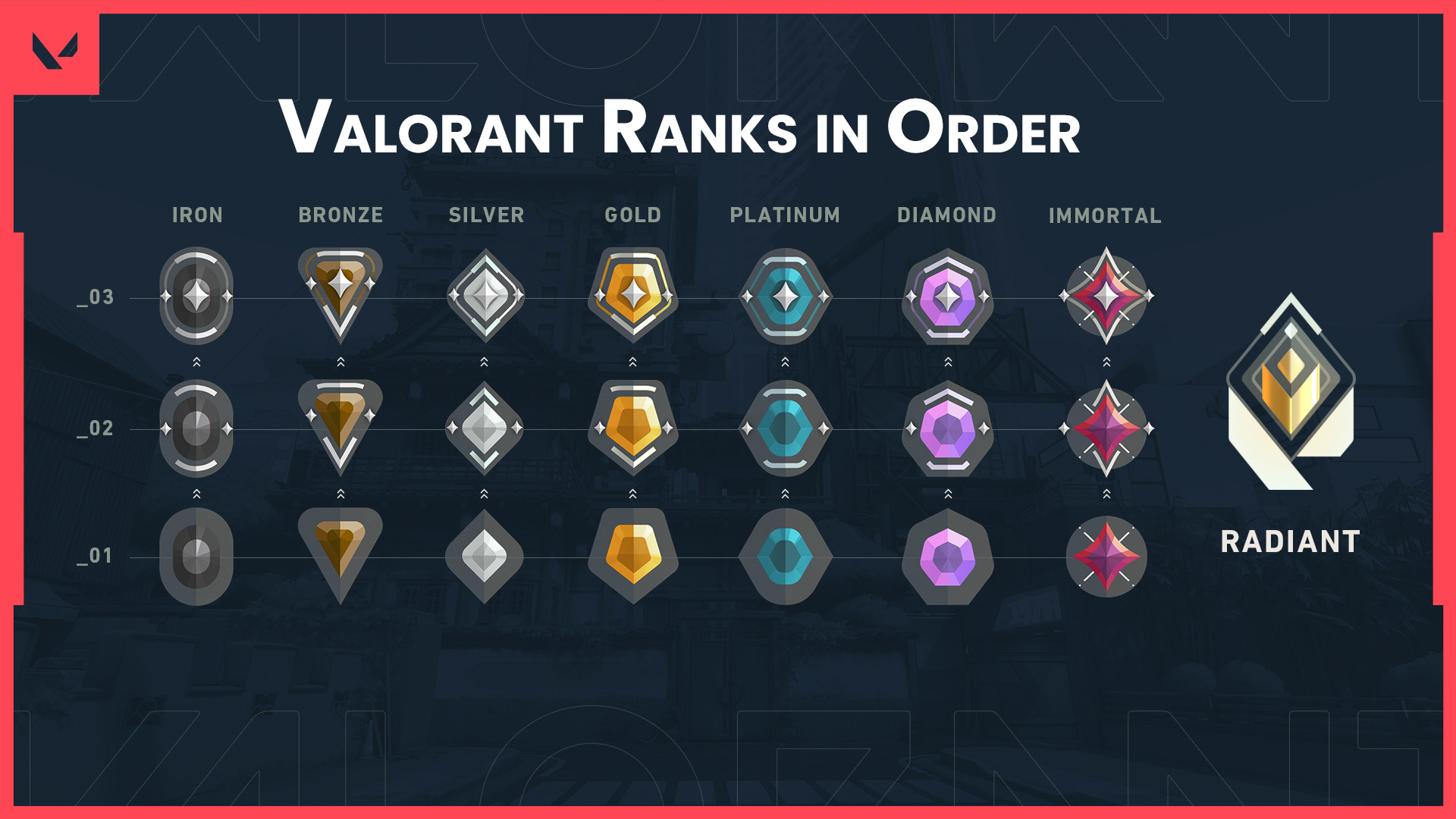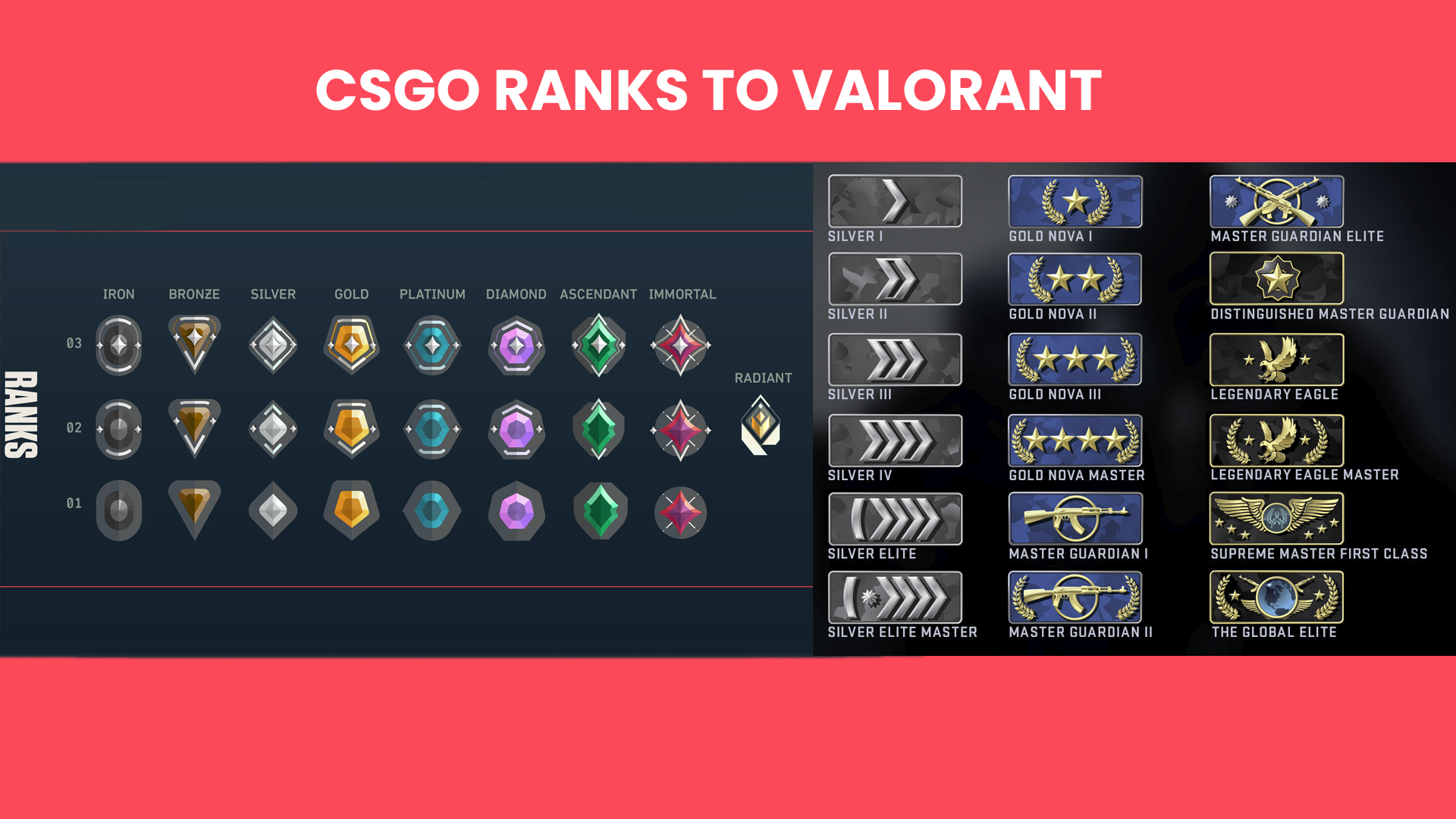VALORANT RANKS
Top 10 Rules to Escape Low ELO in Valorant
In today’s video, we’ll dive into a key issue many Valorant players face—how to climb out of low ELO. This […]
Read MoreWhy Your Movement In Valorant Is Holding You Back
In Valorant, clean movement is not just visually satisf…
Top 10 Rules to Escape Low ELO in Valorant
In today’s video, we’ll dive into a key issue many Valo…
Understanding Valorant’s Ranking System: A Comprehensive Guide
Valorant, despite being just a year old, has already es…
Compare CSGO Ranks to Valorant: What you need to know
Are you a seasoned Counter-Strike: Global Offensive (CS…
LATEST
Understanding Valorant Ranks: A comprehensive guide for players
Valorant, the popular tactical shooter from Riot Games, has captured the attention of gamers and esports enthusiasts worldwide. One of the most compelling aspects of the game is its competitive ranking system. Learn more about Valorant ranks here.
In this comprehensive guide, we’ll dive into the details of Valorant ranks, exploring what they mean, how they work, and what players can expect at each level.
What are the ranks in Valorant?
Valorant ranks are a way for the game to match players of similar skill levels together in competitive matches. The ranking system is designed to create fair and balanced games, ensuring that players are challenged and can improve their abilities over time.
There are a total of eight ranks in Valorant, each divided into three tiers (except for the highest rank, Radiant). The ranks, from lowest to highest, are:
- Iron (1/2/3)
- Bronze (1/2/3)
- Silver (1/2/3)
- Gold (1/2/3)
- Platinum (1/2/3)
- Diamond (1/2/3)
- Immortal (1/2/3)
- Radiant
Players start their competitive journey in the Iron rank and work their way up through the tiers and ranks by winning matches and performing well.
How do Valorant ranks work?
To obtain a rank in Valorant, players must first complete a series of placement matches. These matches are used to gauge a player’s skill level and determine their initial rank. The number of placement matches required may vary, but it is typically around five.
During these placement matches, and in all subsequent competitive games, players will earn or lose Rank Rating (RR) based on their performance and whether their team wins or loses. Winning a match will generally grant players more RR, while losing will cause them to lose RR. The amount of RR gained or lost is also influenced by individual performance, such as the number of kills, assists, and deaths.
As players accumulate RR, they will progress through the tiers within their current rank. For example, a player in Bronze 1 who earns enough RR will advance to Bronze 2, and then to Bronze 3. Once a player reaches the highest tier within their rank (e.g., Bronze 3), they will be promoted to the next rank (e.g., Silver 1) if they continue to earn RR.
Rank disparity and playing with friends: What ranks can play together?
Valorant’s ranking system is designed to match players of similar skill levels together, but it also allows for some flexibility when playing with friends. The game permits a certain degree of rank disparity within a party, meaning that players of different ranks can still play together in competitive matches.
However, there are some restrictions to prevent large skill gaps within a single match. Valorant’s rank disparity system works as follows:
- Iron to Silver players can queue together
- Gold players can queue with anyone up to one tier above or below them (Silver 1 to Platinum 1)
- Platinum and Diamond players can queue together
- Immortal and Radiant players can queue together
It’s important to note that when players with a significant rank disparity queue together, the matchmaking system will try to find opponents closer in skill to the highest-ranked player in the party. This ensures that matches remain fair and balanced, even when players of different ranks are playing together.
Rank decay and act resets
To maintain the integrity of the ranking system and ensure that players’ ranks accurately reflect their current skill level, Valorant implements a rank decay system. If a player doesn’t participate in a competitive match for 14 days, their rank will start to decay. The decay begins with a warning and then proceeds to deduct RR over time. The longer a player remains inactive, the more RR they will lose. However, players will not decay below the rank of Diamond 1.
In addition to rank decay, Valorant also features Act Resets at the end of each Act (a period of roughly two months). During an Act Reset, players’ ranks are soft reset, meaning they will need to play placement matches again to determine their new rank. These resets help to keep the competitive landscape fresh and give players a chance to prove themselves anew.
Tips for climbing the ranks
Climbing the ranks in Valorant requires a combination of skill, teamwork, and dedication. Here are some tips to help you improve your gameplay and ascend through the ranks:
- Focus on improving your aim and movement mechanics through practice and training drills.
- Learn the maps and develop a strong understanding of the best strategies for each one.
- Communicate effectively with your team and work together to execute plans and tactics.
- Be adaptable and willing to play different roles or agents depending on your team’s needs.
- Stay positive and maintain a growth mindset, even in the face of setbacks or losses.
- Review your gameplay footage and identify areas for improvement.
- Take breaks when needed to avoid burnout and maintain a healthy mindset.
Become a better player!
Valorant’s ranking system offers players a challenging and rewarding way to test their skills and progress as they climb the competitive ladder. By understanding how the ranks work, what to expect at each level, and how to effectively play with friends, players can set themselves up for success in their Valorant journey. Remember, the path to the top is a marathon, not a sprint, so stay focused, keep improving, and most importantly, enjoy the process of becoming a better player. Happy gaming!




